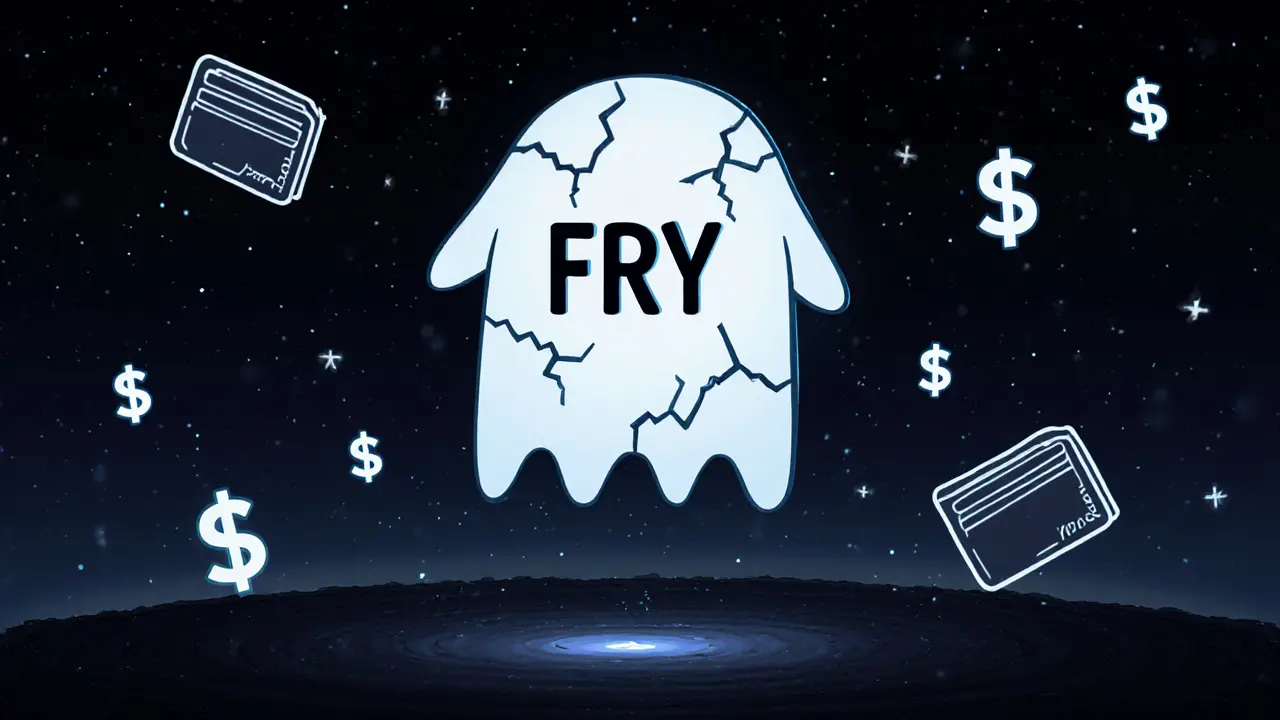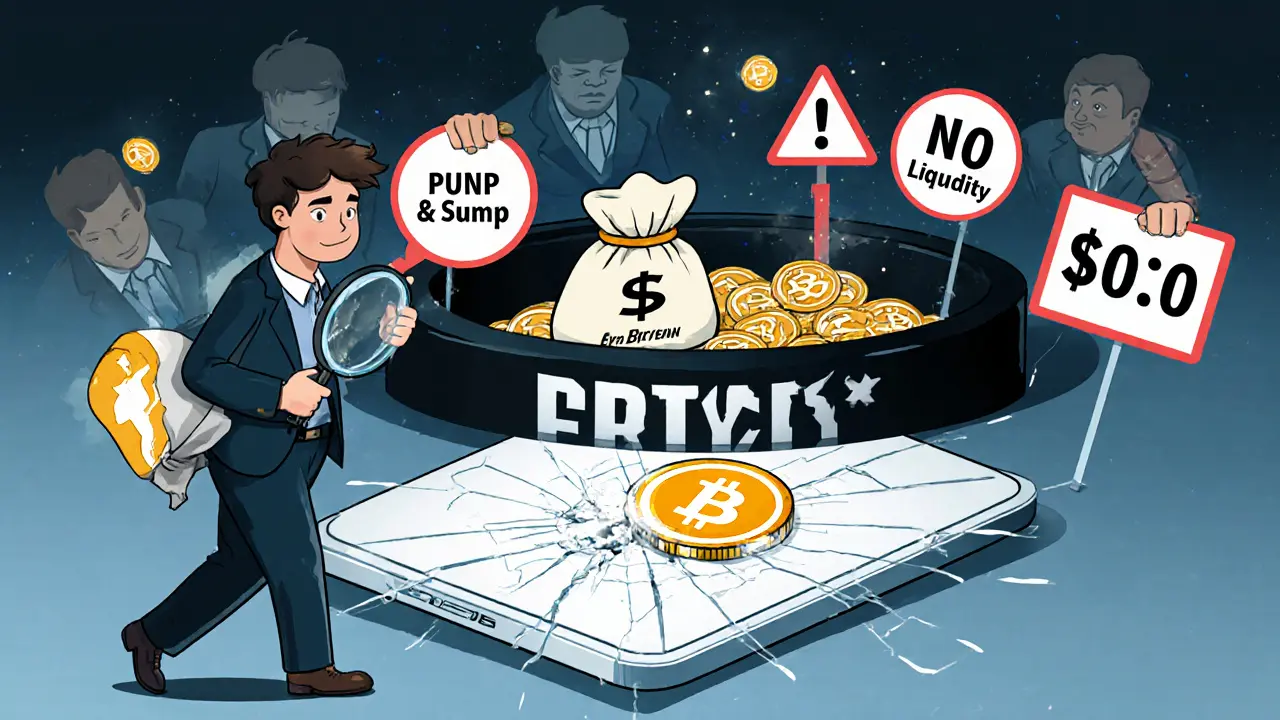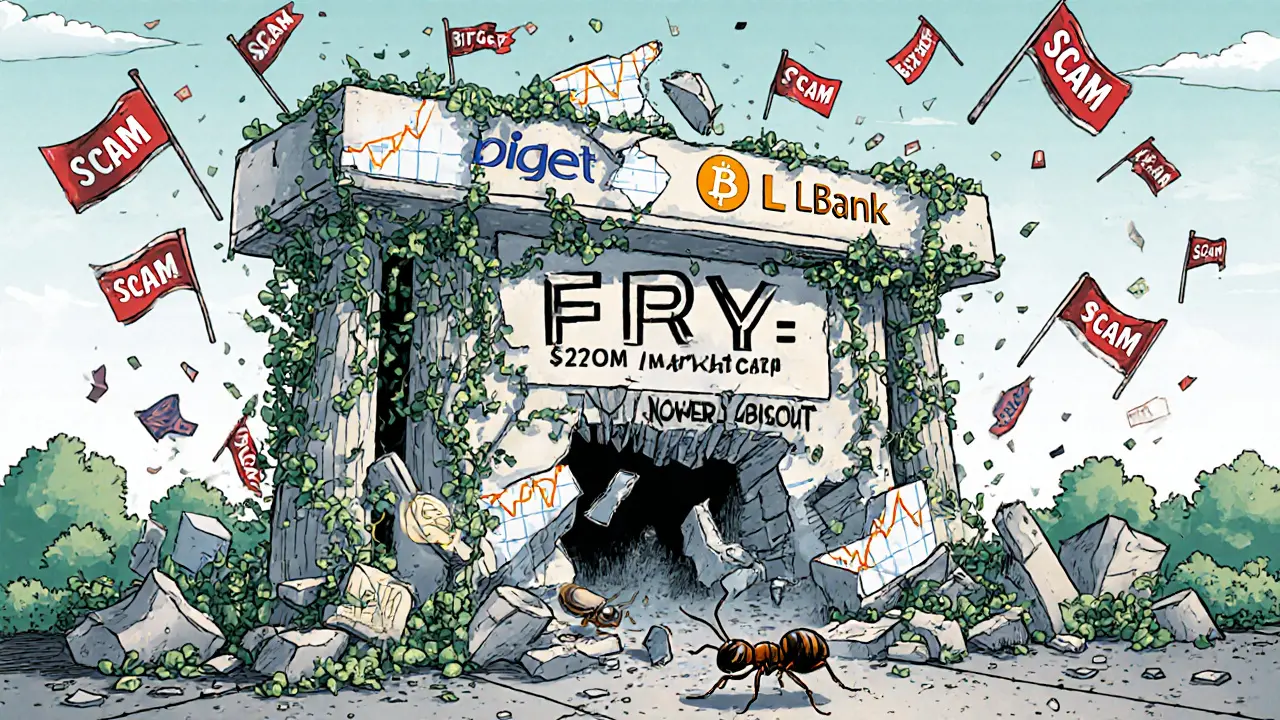
There are over 12,000 tokens built on Solana. Most of them vanish within months. Fry (FRY) isn’t just another one-it’s a textbook example of what happens when a crypto project has no substance, no team, and no real users.
What is Fry (FRY) actually?
Fry (FRY) is a token on the Solana blockchain, labeled as an SPL token with a fixed supply of 1 billion coins. It claims to be a "transactional utility token" meant to boost user engagement and rewards. But there’s no whitepaper. No official website. No GitHub repo. No team names. No roadmap. Just a token address floating around on exchanges with wildly different prices.
On Coinbase, FRY shows a price of $0.21. On LBank, it’s $0.012. On Bitget, it’s listed at $0.00. That’s not a market fluctuation-that’s a red flag. If you can’t even agree on the price across major platforms, the token isn’t being traded by real buyers. It’s being manipulated-or worse, ignored.
Why the price discrepancies matter
Real cryptocurrencies have consistent pricing because they’re traded on deep markets with thousands of buyers and sellers. FRY has none of that. Bitget reports $0 trading volume. Coinbase shows no order book depth. LBank’s data shows only 87 transactions in the last 30 days. That’s not a market. That’s a ghost town.
Even the market cap numbers don’t add up. If you multiply $0.21 by 1 billion tokens, you get $210 million. But CoinGecko lists the fully diluted valuation (FDV) at $157 million-close enough to suggest they’re using the same price. But here’s the catch: if the token is worth $210 million, why is it ranked #5516 globally? Tokens in that range usually have market caps under $100,000. The math doesn’t work because the market isn’t real.
No one holds it, no one uses it
Let’s look at the blockchain. Solscan, the official Solana explorer, shows only 127 unique wallets holding FRY. That’s fewer than a small Discord server. Compare that to SOL, USDC, or even obscure Solana tokens like RAY-all of which have hundreds of thousands of holders. FRY has no DeFi integrations. No dApps accept it. No merchants list it. No wallets auto-detect it. You can’t even find it in Phantom or Trust Wallet unless you manually paste a contract address-which no one has verified.
And that’s the biggest danger: no one knows the real contract address. Legitimate tokens publish theirs. FRY doesn’t. That means you could be interacting with a fake version. A scammer could create a token with the same name, same symbol, and same supply-and trick you into sending your SOL to it. There’s no way to verify authenticity.

Experts and security firms say: avoid it
CryptoSlate flagged FRY in their November 2025 "Low-Cap Token Watch" report for having "multiple red flags": price discrepancies, anonymous team, zero on-chain activity. CertiK, a top blockchain security firm, gave it a 2.1 out of 10 on legitimacy. That’s worse than most meme coins.
Benjamin Cowen, a well-known crypto analyst, called tokens like FRY "classic low-liquidity traps." He’s seen this pattern before: a token gets listed on a small exchange, a few people buy in hoping for a 1000x, then the price crashes when the creators dump their holdings. That’s exactly what happened with FRY. Its all-time high was $0.686 in March 2024. Today, it’s down 82% on Coinbase’s price. That’s not a correction. That’s a collapse.
Users are warning each other
On Reddit, there are three posts about FRY-all from the same user, "SolanaGambler69," who’s been pushing it since June 2025. No real discussions. No success stories. Just hype.
On Twitter, one user @CryptoSafetyCheck shared their experience: they tried swapping 1 SOL for FRY on Raydium. The slippage hit 99.8%. The transaction failed five times. That’s not bad luck. That’s a token with zero liquidity. When you can’t even buy it without losing 99% of your value, you’re not investing-you’re gambling on a glitch.
There are zero reviews on Trustpilot. Zero comments on CoinGecko’s community section. No YouTube tutorials explaining how to use it. Just silence.

What’s the real risk?
Fry (FRY) doesn’t just lack value-it lacks legitimacy. It’s not a failed project. It’s not an underdog. It’s a non-entity. No team. No code. No adoption. No future.
The SEC has started targeting tokens with no use case and rankings below #5000 under the Howey Test. FRY fits that profile perfectly. If regulators crack down, exchanges will delist it. And when that happens, the price won’t drop-it’ll vanish. Like it already has on Bitget.
Even if you think "I’ll buy low and sell high," there’s no high to sell to. No one’s buying. No one’s selling. The market is dead.
Bottom line: Don’t touch it
Fry (FRY) isn’t a crypto investment. It’s a warning sign. It checks every box for a pump-and-dump scheme: anonymous team, zero transparency, price inconsistencies, no on-chain activity, and no real-world use. It’s the kind of token that lures in beginners who don’t know how to read the signs.
If you see FRY on an exchange, don’t trade it. Don’t even look at the chart. Don’t follow the hype. There’s nothing there. The only thing you’ll gain is a loss.
There are thousands of legitimate tokens on Solana. Some are risky. Some are promising. But FRY? It’s just noise. And noise doesn’t make money-it takes it away.
Is Fry (FRY) a real cryptocurrency?
Fry (FRY) exists as a token on the Solana blockchain, but it has no official team, no whitepaper, no website, and no verifiable use case. It’s technically a cryptocurrency, but it lacks the transparency and adoption that define legitimate projects. Most experts classify it as a high-risk, low-liquidity token with no long-term viability.
Why is the price of FRY so different on different exchanges?
Price discrepancies happen when there’s no real trading volume. FRY is listed on exchanges that don’t have enough buyers or sellers to set a fair price. Coinbase shows $0.21, LBank shows $0.012, and Bitget shows $0.00. These numbers aren’t based on market activity-they’re either manual inputs or outdated data. Real markets have consistent pricing because trades happen constantly. FRY doesn’t.
Can I buy Fry (FRY) safely on Phantom or Trust Wallet?
No. Neither Phantom nor Trust Wallet auto-detects FRY. To even attempt buying it, you’d have to manually enter a contract address-but no verified address is published anywhere. Entering a fake address could result in losing your entire wallet balance. Most security experts advise against interacting with FRY at all.
Is Fry (FRY) a good investment?
No. FRY has a 0.3 out of 100 viability score from CryptoRank. It has zero trading volume on major platforms, no development activity, and no community adoption. The token’s price has dropped 82% from its all-time high. Experts like CertiK and CryptoSlate warn it’s a scam risk. Investing in FRY is gambling, not investing.
What happened to FRY’s all-time high of $0.686?
The all-time high was likely caused by a small group of buyers pumping the price on low-volume exchanges. Once they sold their holdings, the price collapsed. This is a classic pump-and-dump pattern. With no real users or utility, the token had nowhere to go but down. Today’s price reflects the truth: nobody wants it.
Should I avoid FRY completely?
Yes. Every credible source-CertiK, CryptoSlate, CoinGecko, and even Bitget’s own warning-says to avoid it. There’s no upside worth the risk. The only people benefiting from FRY are those who created it and sold early. Everyone else loses money. Skip it. Save your time and your crypto.


Write a comment